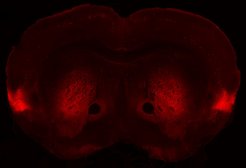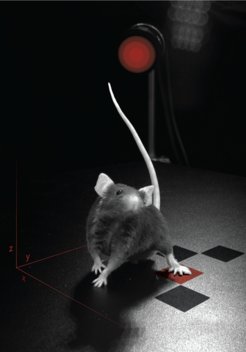
Department Emotion Research
Nadine Gogolla
What are emotions?
While we all have an intuitive sense of what emotions are, it is surprisingly difficult to find a definition of ‘emotion’ that reaches consensus amongst scientists. We would like to ask the brain how emotions are encoded and in which categories or dimensions they exist. Towards this goal, we analyze and attempt to identify consistent patterns in emotion expression (see below ‘How to detect emotions’) and brain activity (see below ‘What is the brain basis of emotion’). Ultimately, we hope that our insights can help to provide biology-driven definitions of emotion states.
How to detect emotions?
We read out emotion states through a combination of multiple measurements, including precise behavioral observation and analysis, measurements of bodily and hormonal changes. We use machine learning and machine vision tools to analyze our data and come up with novel ways to define and detect changes in emotion.
Read about our recent findings on 'Facial expressions of emotion states in mice'

What is the brain basis of emotion?

We combine readouts of emotional processes with targeted measurements and manipulations of brain activity at multiple scales, from processes within single neurons, over populations of identified neurons, to neuronal circuits and networks spanning the entire brain, reaching into the peripheral nervous system (the bodily innervation).
We are interested in how sensory input from outside and within the body are interpreted and influence emotion states. How does the brain make predictions and conceptualizes information streams?
To study these questions, our lab has a particular interest in studying the insular cortex. The insular cortex is thought to play an important role in the encoding of emotion, but also in bodily and sensory processes. On top, the insular cortex is a hub affected across many psychiatric diseases.
Read on how the insular cortex represents and regulates aversive states and behaviors
What is the role of our body in emotion?
We want to know how the bodily changes relate to emotion processes. Do we run away because we are afraid, or are we afraid because we run away? How do changes in heart rate, breathing, blood pressure and within the gut influence emotions?
Read about our findings on how freezing, a form of fear expression, coincides with changes in heart rate and regulates emotion.
Emotion and psychiatric diseases

Our laboratory is located at the Max Planck Institute of Psychiatry in Munich. Many psychiatric diseases are characterized by changes in emotion processes. We are convinced that a basic understanding of how emotions arise and are regulated by the brain, may contribute to the development of novel diagnostic and therapeutic approaches.
At our Institute basic, translational and clinician researchers work closely together, trying to build bridges between fundamental and applied research.


